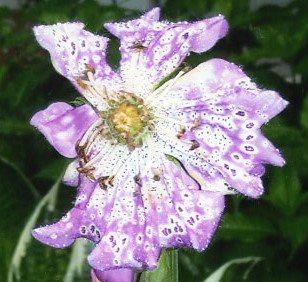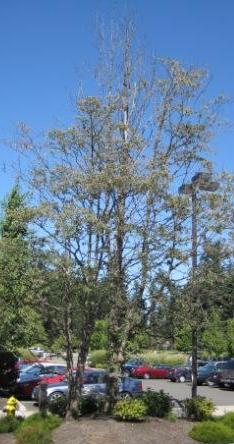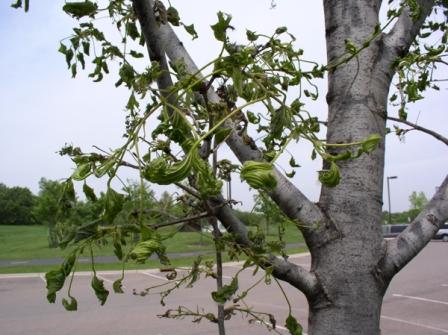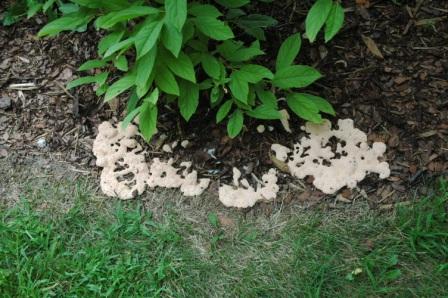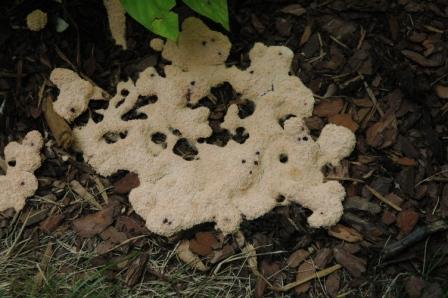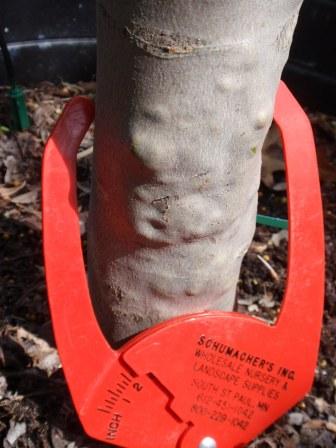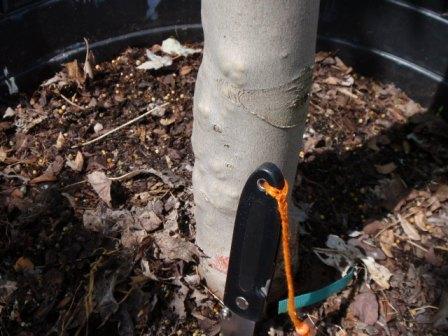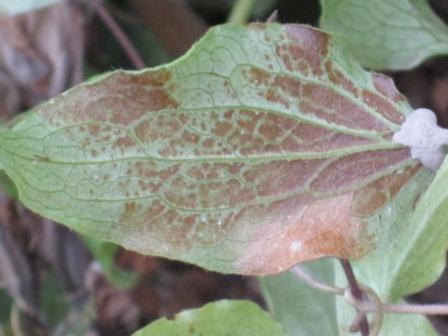
Lots of good, thoughtful answers from you over the weekend about these trees. Here’s another photo from a bit farther away:
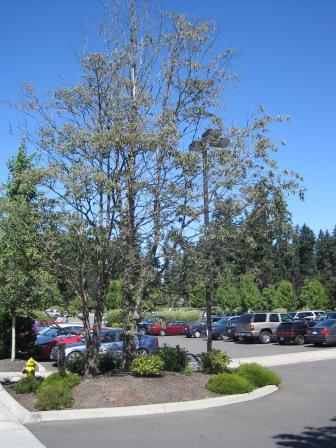
As Laura pointed out, there’s a relatively new parking lot here. The creation of the parking lot both compacted the surrounding root zone, then covered it with impermeable surface. The dogwoods are huddled on their little island, which is unirrigated, unmulched, and indeed hot in the summer as Daniel said. All of these environmental insults, in addition to the mature age of these trees, have led to what we call a “mortality spiral”: trees are environmentally stressed and then become more susceptible to opportunistic pests and diseases. Jon and Wes both did a nice job of discussing this.
There’s a couple of take-home messages here:
1) If you must disturb a significant portion of an existing tree’s root zone, you should both protect the zone from undue compaction during construction, and then follow up with heavy-duty aftercare of irrigation and mulching.
2) If you can’t follow point #1, then for heaven’s sake just remove the trees when they start their inevitable failure. “Lingering death” is not an attractive landscape theme.

